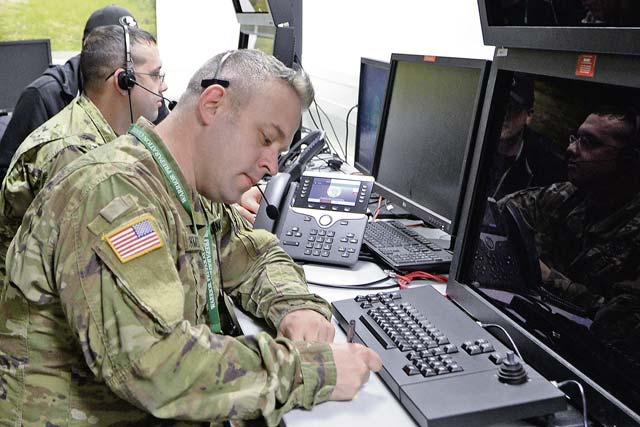
The Warrior Preparation Center European Integrated Air and Missile Defense Center hosted a three-day, joint-service Integrated Air and Missile Defense exercise on Einsiedlerhof Air Station, Jan. 28 to 31.
Approximately 60 participants from the U.S. Air Force, U.S. Army, U.S. Navy, and NATO affiliates collaborated in the exercise.
“The exercise was a hyper realistic simulation where we engaged in both offensive and defensive scenarios,” said U.S. Army Col. Timothy Hines, Missile Defense Agency government lead. “Our agency modeled the simulation to account for any possible missile or airborne threat from modern technology to projected future technological advancements.”
The exercise simulated scenarios countering collections of firepower from hypersonic to ballistic missiles. The participants also practiced countering new technology and advancing cyber threats.
The training consolidated two concurrent exercises: the European Testbed, which tested upper tier ballistic missile defense, and Spartan Shield, which tested lower-to-mid tier defenses.
U.S. Army 1st Lt. Johnathan Nowicki, 5th Battalion, 7th Air Defense Artillery Regiment, Patriot Weapon System operator said, “the exercise takes every air breathing threat into account and how to combat them — from air surface missiles, hypersonic missiles, cruise missiles, unmanned aircraft, and anti-radiation threats.”
Nowicki expounded on the purpose saying the exercise made the unit more comprehensive when it came to air defense.
U.S. Air Force Col. Cameron Dadger, WPC commander, said the exercise used very realistic simulated threats and enabled each U.S. military branch to operate in unity, emphasizing combined capabilities, tactics, techniques and procedures.
The Missile Defense Agency anticipates multiple trainings will be conducted following the success of the exercise.
Hines said the evolution and expansions of the WPC over the last decade will enable the thousands of service members who come through their doors to continue to strengthen the defense of Europe in ways never seen before.







